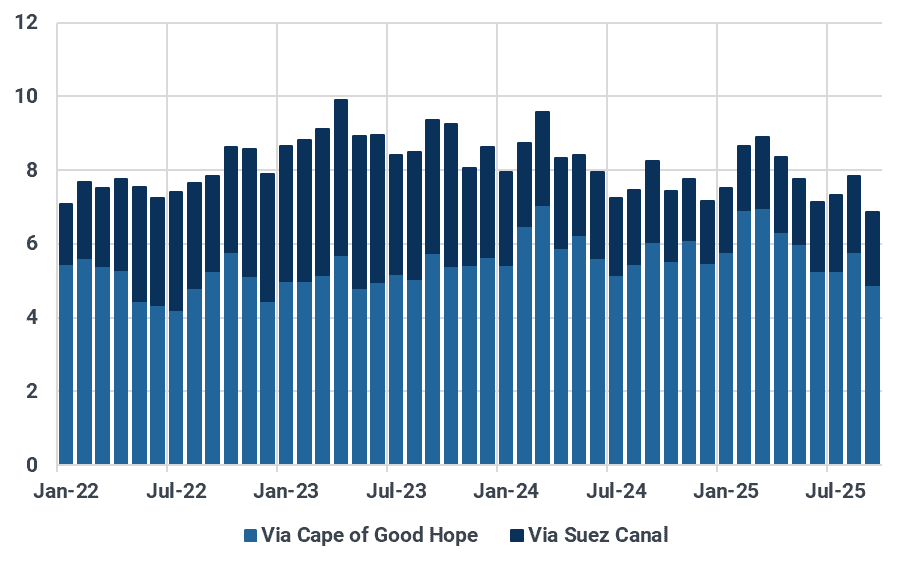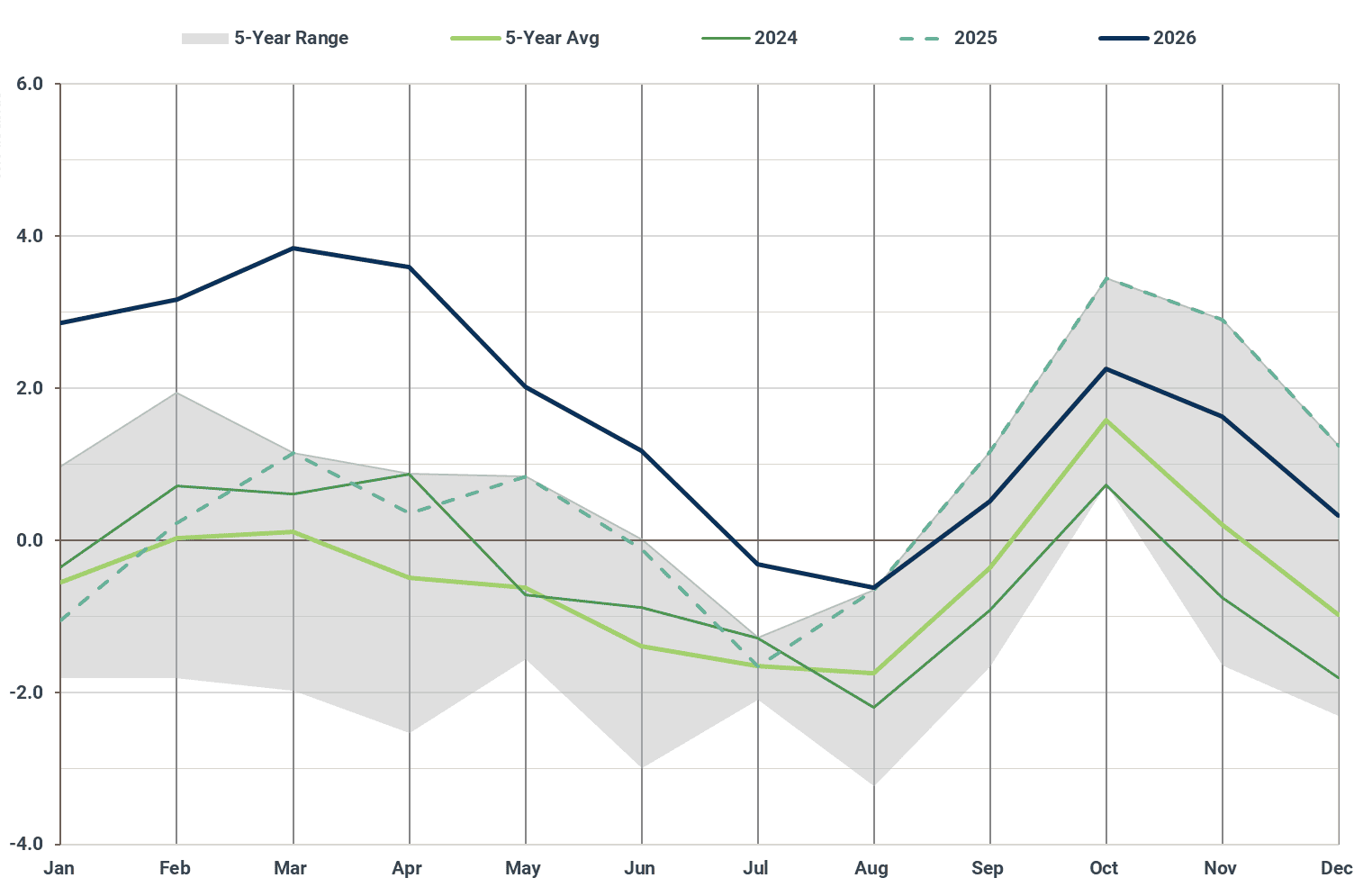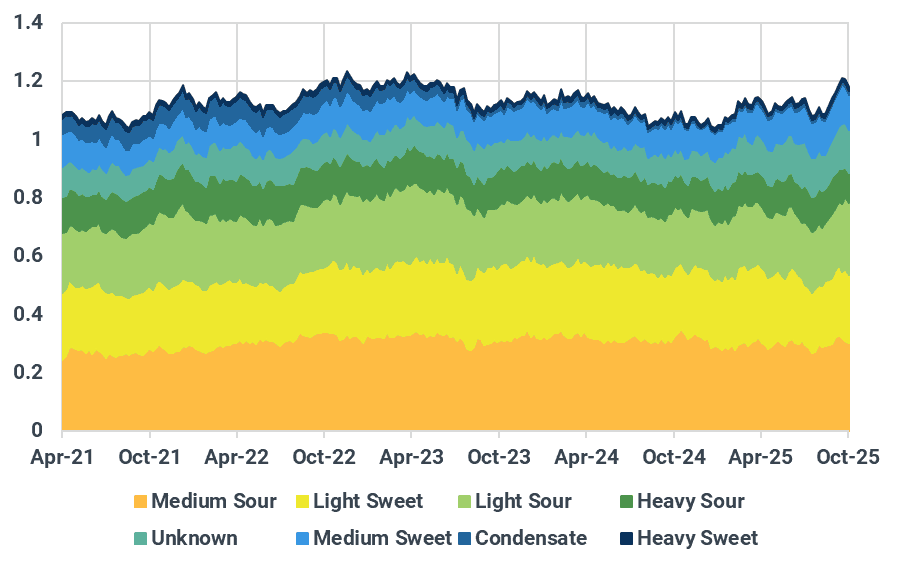Crude prices hit multi-month lows amid US tariff threat
Crude markets are buckling under a perfect storm of bearish pressures. Renewed fears of a trade war are threatening demand, while a fading geopolitical risk premium, a looming 3 Mbd supply glut, and aggressive producer price cuts all point to overwhelming oversupply and a decisively negative market outlook.
Key takeaways:
- Tariff threats roil market: Renewed US-China trade tensions triggered a sharp sell-off, with Brent falling below $60/bbl on Friday, although the threat of tariffs has eased since.
- Geopolitical risk fades: A ceasefire in Gaza is reducing the risk premium, potentially normalizing traffic through the Suez Canal.
- Massive supply glut looms: Global oil balances are forecast to show a 3 Mbd surplus until April 2026, starting this month.
- Producers cut prices: Falling OSPs from Saudi Arabia, Iraq, and Kuwait confirm weakness in the physical market.
Crude oil prices experienced a sharp downturn last week, with global crude prices falling by over 4% on Friday after the US president threatened higher tariffs on Chinese goods. The move sent Brent crude below $60/bbl for the first time since May, amplifying market concerns that escalating trade tensions could slow the global economy and erode demand for oil. Although the president has since partially backtracked on this threat, the market's sharp reaction highlights the market's current vulnerability to macroeconomic shocks amid an already fragile fundamental backdrop.
Adding to the downward pressure is a recent ceasefire deal in Gaza, which has begun to unwind the market’s geopolitical risk premium. A prolonged peace could reshuffle global crude and product flows via the Suez Canal, where traffic remains ~40-50% below pre-war levels, respectively. A return to normal transit would ease logistical bottlenecks and further weigh on sentiment.
Crude and condensate flows via route, Mbd

Source: Kpler
Beyond immediate headlines, a looming supply glut paints a bearish picture for the medium term. Global balances are expected to average a surplus of 3 Mbd until April 2026. October marks the onset of this significant oversupply, which is the result of robust production from non-OPEC+ countries combined with the scheduled unwinding of OPEC+ cuts.
Global crude and condensate balance, Mbd

Source: Kpler
While robust product cracks are keeping refiners desperate to keep runs elevated, the supply glut is confirmed by recent pricing actions from major producers. Following the lead of Saudi Aramco, both Iraq and Kuwait have reduced their OSPs across all regions, signaling that ample supply is readily available. Despite this, Chinese demand for November-loading crude from Saudi Arabia has remained muted, providing additional concerns to OPEC+.
This view is supported by Kpler data, with weekly crude on water hitting consecutive multi-year highs over the first two weeks of October. This points to a well-supplied market facing further pressure as crude stocks begin to accumulate outside of China.
Weekly crude on water by quality, Mbd

Source: Kpler
Although prices have mounted a slight recovery this morning, with Brent trading around the mid-$60s, the confluence of bearish macroeconomic threats and overwhelming supply fundamentals suggests the path of least resistance remains to the downside.
Market insights you can trust
Kpler delivers unbiased, expert-driven intelligence that helps you stay ahead of supply, demand, and market shifts.
Trade smarter. Request access to Kpler today.

Uncover risks before regulators do
See Kpler's Risk & Compliance insights in action.









